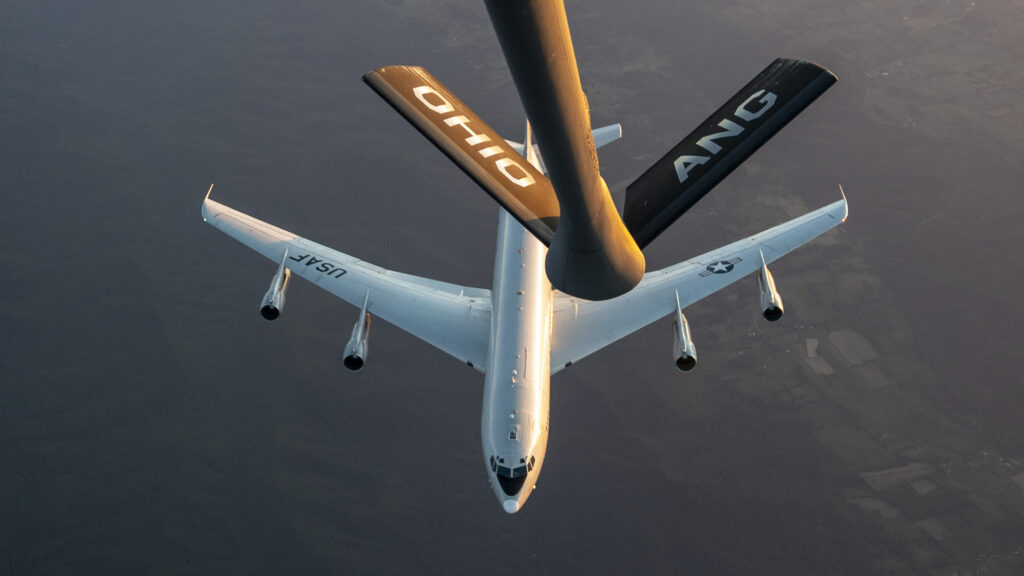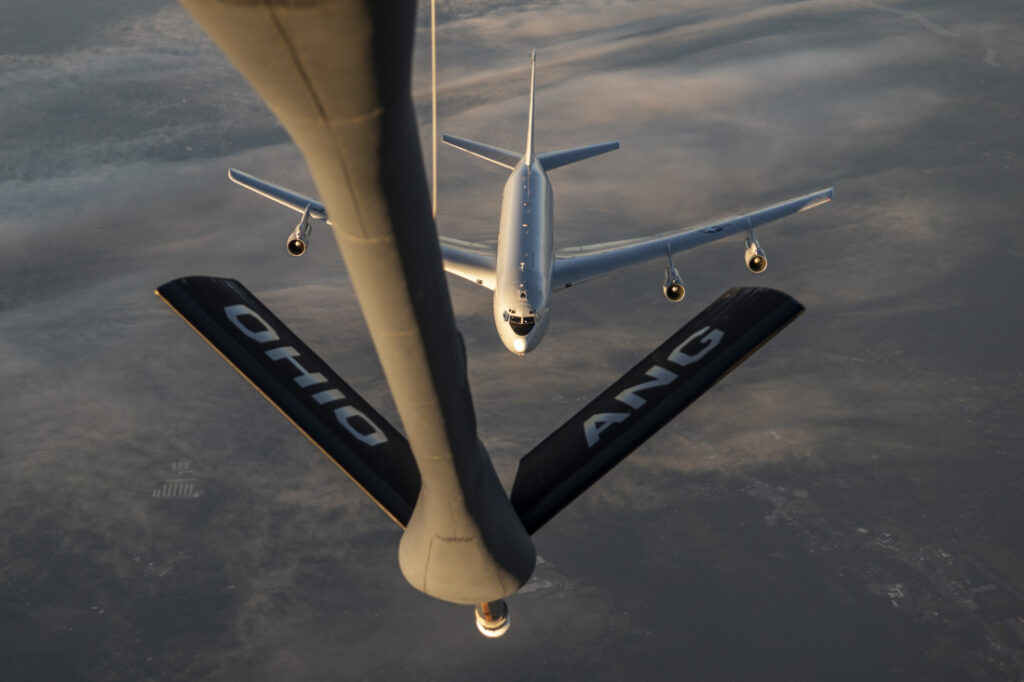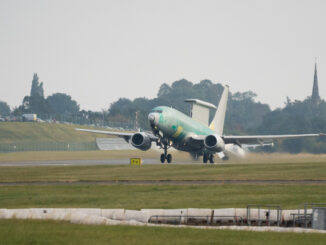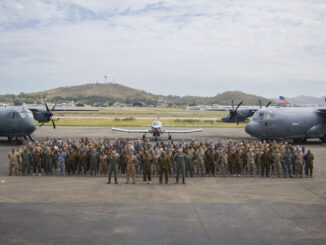 At the beginning of this month, a KC-135 Stratotanker of the 121st Air Refuelling Wing performed a refuelling practice in support of an E-8C Joint STARS aircraft of the 116th Air Control Wing.
At the beginning of this month, a KC-135 Stratotanker of the 121st Air Refuelling Wing performed a refuelling practice in support of an E-8C Joint STARS aircraft of the 116th Air Control Wing.
The Northrop Grumman E-8 Joint Surveillance Target Attack Radar System (also known as Joint STARS) was introduced into operational service in 1991. The aeroplane features an airborne targeting and battle management system, compliant with command and control (C2) platform.
The E-8 is able to perform ground surveillance and reconnaissance duties, track helicopters and ground vehicles, detect radar antennas and slow-moving aircraft, as well as collect a broad range of intelligence data. Information gathered by the aeroplane can be transferred in real time to various command posts, therefore allowing other forces to know enemy positions and situation on the battlefield. In addition, the E-8 may indicate enemy targets and support attack operations.
The aeroplane was developed from Boeing 707-300 commercial airliner. The airframe was significantly upgraded and equipped with radar systems, communication suite and battlefield control systems. Its most characteristic feature is eight-metre-long, canoe-shaped radome that houses a side-looking phased array antenna for detection of targets at range beyond 250 kilometres from the aircraft. There were only seventeen aeroplanes of that type built.

The E-8 is operated by a flight crew of four (pilot, co-pilot, navigator and onboard engineer), but the battle management systems are operated by up to eighteen different mission specialists (fifteen from the USAF and three from the US Army).
For the first time, the Joint STARS aeroplanes were used operationally during Operation Desert Storm in 1991, then supported the following Operation Joint Endeavour in 1995.
In 2005, Northrop Grumman was awarded a contract for upgrading the Joint STARS platform. The first modified aircraft, equipped with new JT8D-219 engines made by Pratt & Whitney, performed its maiden flight in 2008.
Standard flight endurance of the upgraded E-8C is nine hours. However, due to aerial refuelling ability the aircraft can perform long-range missions focused on developing, detecting and locating enemy targets beyond the forward area of own troops.
Currently, the 116th ACW is the only United States Air Force unit that operates the E-8C Joint STARS aircraft.

Cover photo: A KC-135 Stratotanker from the 121st Air Refueling Wing refuels an E-8C Joint Surveillance Target Attack Radar System with the 116th Air Control Wing over the skies of North Carolina, June 1, 2023. (US Air National Guard Photo by Airman First Class Ivy Thomas). All photos © U.S. Department of Defence (DoD). DoD information materials were used, in compliance with Public Domain licence. The appearance of U.S. Department of Defense (DoD) visual information does not imply or constitute DoD endorsement.



